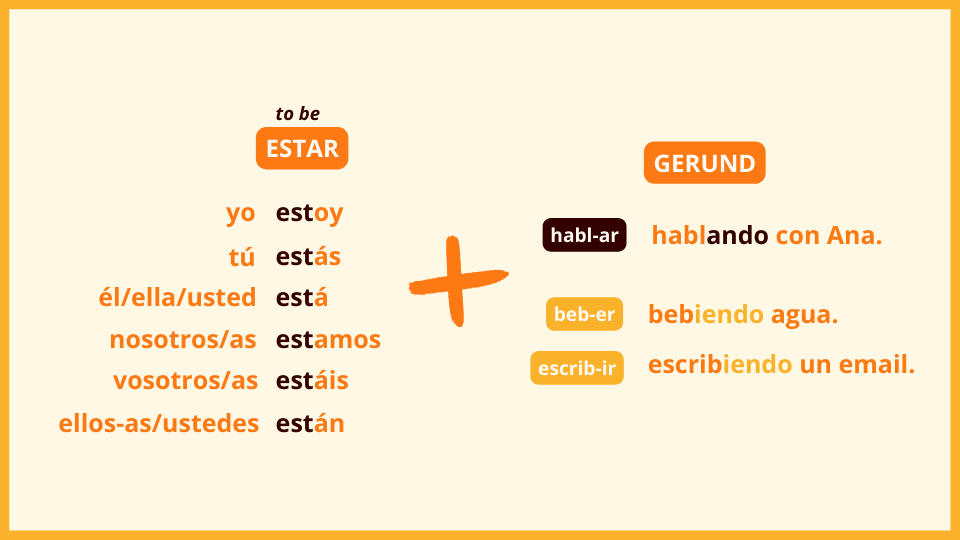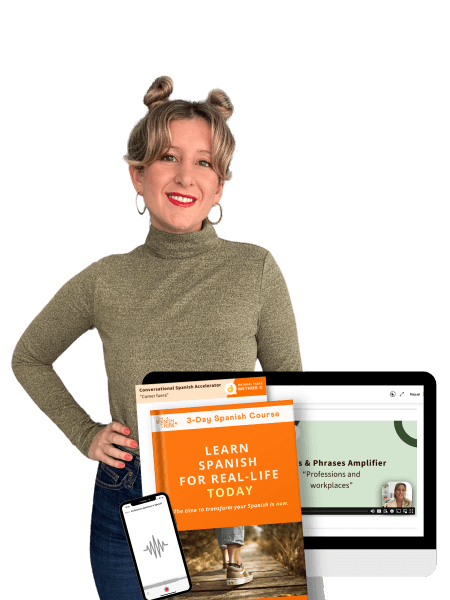What are you doing? What was she thinking? Why are they dancing? Indeed, we use the “-ing” form of verbs a LOT in English.
And it’s no different in Spanish. Aside from the infinitive form (comer) and present tense (como), I think the most used conjugation of most verbs is the present progressive – the “-ing” conjugation (comiendo).
Luckily, it’s just as easy as in English. In this guide, we’ll show you how to do it.
TIP: Unlike English the progressive in Spanish is only used to talk about actions in process, not as a future tense.
Regular conjugation
In Spanish to convert a verb to progressive, instead of ING, we use one of two different endings (depends on the last 2 letters of the verb).

Exceptions
The exceptions for this don’t change the end, but the beginning of the verb. Here are the most common ones:
| Dormir (to sleep) | Durmiendo (sleeping) |
| Sentir (to feel) | Sintiendo (feeling) |
| Pedir (to ask) | Pidiendo (asking) |
| Venir (to come) | Viniendo (coming) |
| Decir (to tell) | Diciendo (telling) |
-yendo
If after the general conjugation the “i” gets stuck between to vowels we need to change the conjugation to yendo. For instance:
- Leer – leyendo leiendo (read – reading)
- Creer – creyendo creiendo (believe – believing)
- Ir – yendo iendo (go – going)
- Traer – trayendo traiendo (bring – bringing)
TIP: Remember, this “y” sounds like a “j” in most latin countries.
Now you!
Record yourself saying what these people is doing in the picture below.
Use the structure está/están + GERUND.
¿Qué están haciendo?
Example: “La mujer está pintando.”
Y tú, ¿qué estás haciendo? And you, what are you doing?
Let me know in the comments below!
Un abrazo,
Raquel
CEO of The Spanish Tribe




Responses